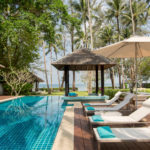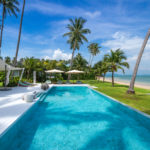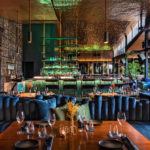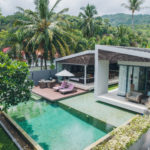If you were anything like me as a kid, you were 100% committed to your career as a Lego architect. For many of us who grew up with the toy bricks, being an architect seemed like the dream – however, for most, this dream was ultimately ruined because it necessitates an understanding of things like math and physics (yeah, no thanks). And then there is the realisation that architecture is not as glamorous as our kid-brains make it out to be. Unfortunately, conventional wisdom tells us that it’s not all fun and spending each day designing three-story slides.
Or maybe it is? (The “fun” part, I mean).
To find out more, we spoke with the multi-disciplinary architect, Marisa Yiu. Marisa is the Founding Partner and Director of ESKYIU and Co-founder and Executive Director of Design Trust in Hong Kong. Along with her partner, Eric Schuldenfrei, Marisa is much more interested in creating something novel and out-of-the-box than she is in the typical concrete, glass and steel.
Quick facts – Marisa Yiu
- Marisa is the Founding Partner and Director of ESKYIU and Co-founder and Executive Director of Design Trust
- ESKYIU looks at how design can make our surroundings more vibrant and stimulating, as Marisa believes that architecture should be more about how people engage with space rather than purely solid artefacts.
- Design Trust is a charity supporting the creative projects of emerging designers in Hong Kong and the Greater Bay Area. Projects take on designs from multiple disciplines from graphics and media to wearables and architecture.
- Some of Marisa’s works include a forest-like installation in an industrial district of Hong Kong, a continuously changing play space, a book on today’s instant culture, and an evolving fashion museum.
You’re not an architect in the sense that most people might be used to. Can you tell us what it means to be a multi-disciplinary architect?
My partner Eric and I founded ESKYIU to ask questions about our city and challenge how the built environment is shaped. We integrate art, design, culture and technology to create novel and exciting social experiences that embrace the public realm and empower positive interactions amongst communities. We are fascinated by how design fosters conversations and collaborations. For us, architecture is more than just about the built environment but rather how it plays a role in the social environment.
In essence, we experiment with ways in which the built environment and constructs of labour shape social relationships and form connections between civic engagement, social values and sustainable design.

What inspired you to branch out into this form of design and architecture?
It was a combination of Eric’s interest in technology and my interest in the social environment! We want to challenge the definition and constitution of a community that is being continuously shaped. Architecture is a human project, and we love researching how unique spaces and mediums bring about change.
Read also: Entreprenomad: David Gim – Co-Founder and Film Producer at Continuance Pictures
Your November 2018 exhibition, PLAYKITS looks like quite fun. What was the motivation behind creating an exhibition that changes each day?

We wanted to create a complex set of transformable objects that not only interacts with the audience but keeps an active engagement and dialogue. PLAYKITS was designed to question the notion of play, work and sustainability.
As a whole, the exhibition is a series of collaborations between performers and innovators, such as Swire’s Artistee Space, Nike and the Hong Kong Music Ensemble. These collaborations enabled us to create a dynamic, ever-changing exhibition that is both sustainable, interactive and retrospective.
Can you tell us a bit more about Design Trust Futures Studio?
Design Trust Futures Studio’s mission is to make the invisible yet powerful cultural assets of Hong Kong more accessible to the public while curating public and event-based design dialogues and interventions. We find inspiration with the past to shape the future of culture in Hong Kong. As an annual programme, the themes and format change according to the urgency of the topic or the context.
Why did you decide to found Design Trust (DTFS) and what impact do you feel the charity has had on the community?

We started DTFS with the goal of supporting emerging and innovative designers. These are young designers who have projects that develop expertise, build research initiatives and content related to Hong Kong and the Greater Bay Area. We want to engage a multiplicity of design disciplines from graphics, media, architecture to the built environment, by actively accelerating creative research, design and development. In doing this we also curate and organise public-facing activities to engage with the community.
These projects also allow different communities (local or international) to have access to various issues, narratives and perhaps a potential area for expansion of research.
The DTFS theme this year is “Heritage is Innovation.” Why do you think creating a new narrative for Hong Kong’s heritage is important?
In Hong Kong, we’ve been so used to throwing away old things and starting from zero. With this theme, we’re asking the public to reconsider the value and meaning of the items we possess. We are determined to add new energy to make something that is both old and new. We want to create something inspiring that can be passed on to future generations.

Most of the program will be centred around the old Haw Par Mansion in Tai Hung. Why is this space so important?
Haw Par Mansion was recently unveiled to the public to become home for a new music foundation, and the neighbourhood of Tai Hang is undergoing a transformation, both presenting a fascinating intersection of old and new, ancient and modern, colonial and post-colonial.
Read also: Hu’us That Guy: How Sean Lee Went from Banks to Living the Dream in Bali
What’s your favourite design to date – whether it’s one of yours or someone else’s?

Industrial Forest is one of my favourite projects. It questions the nature of Hong Kong, utilising materials to mimic organic forms and inviting the audience to interact and question what we value. I love how the artificial forest brought back nature into the site – from mushrooms to spider webs and birds, and allowed us to discover unexpected outcomes.
What are some qualities you need to make it in your field?
Being a strong communicator, having social awareness, asking good questions and remaining constantly curious is the basic qualities you need to be in the architecture field.
What is the best advice you can give to someone who aspires to start up their own architecture firm?
Have no fear! Have the courage to apply for grants and other support systems. The most important thing is – be able to give yourself your own design brief.
Do you have a favourite holiday destination where you go to unwind or one that you continually take inspiration from?
Definitely in Asia, away from technology and spending time with my family. I love listening to the sound of waves and discovering new cultural nuances along the way. Recently, we’ve been to Thailand and Vietnam. The next place might have to be Myanmar!





